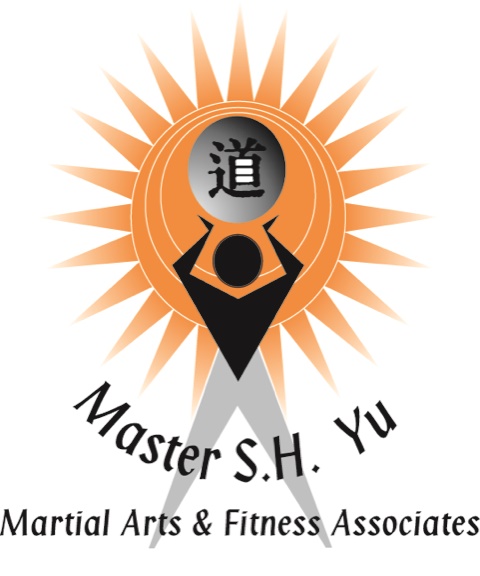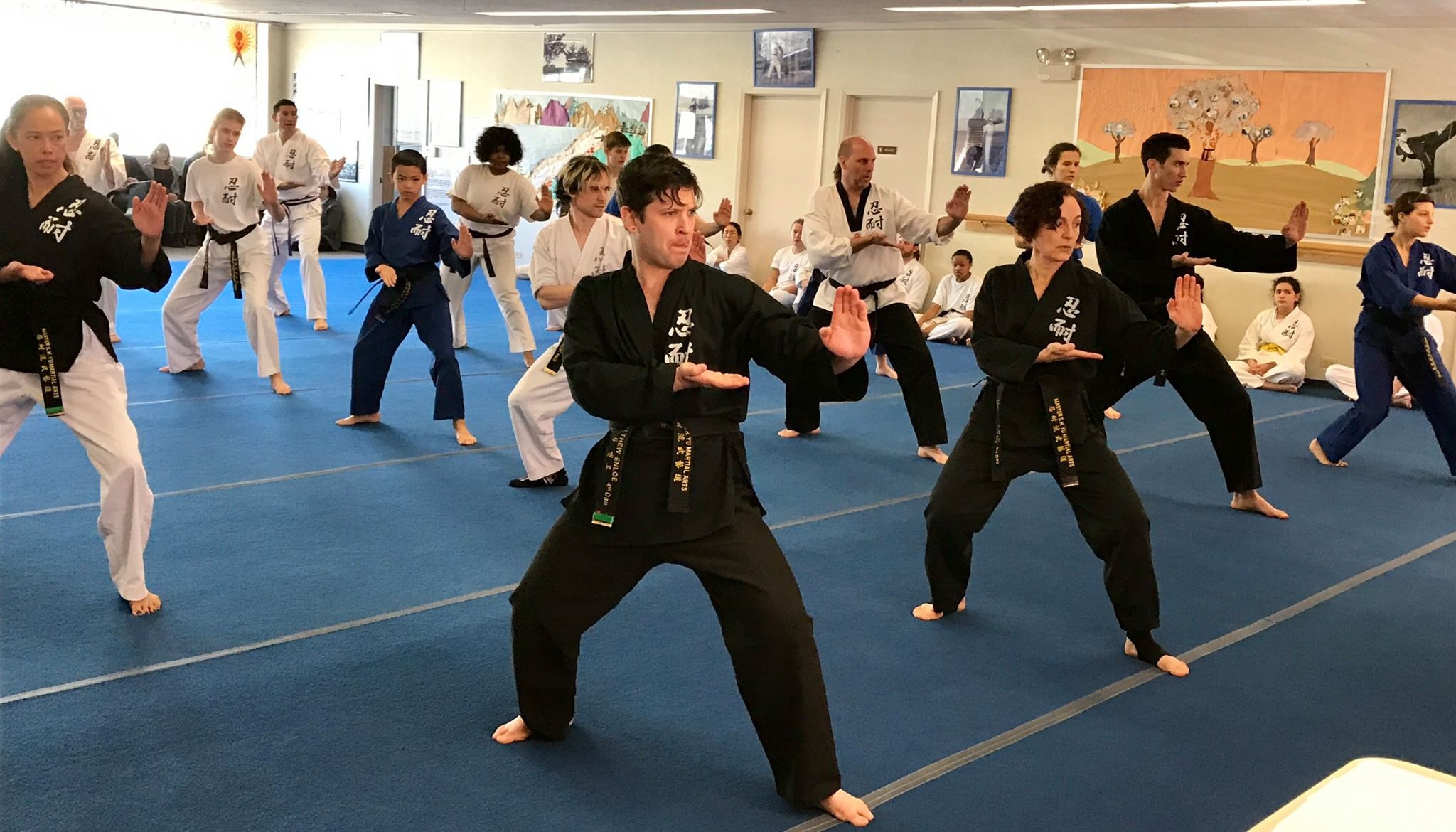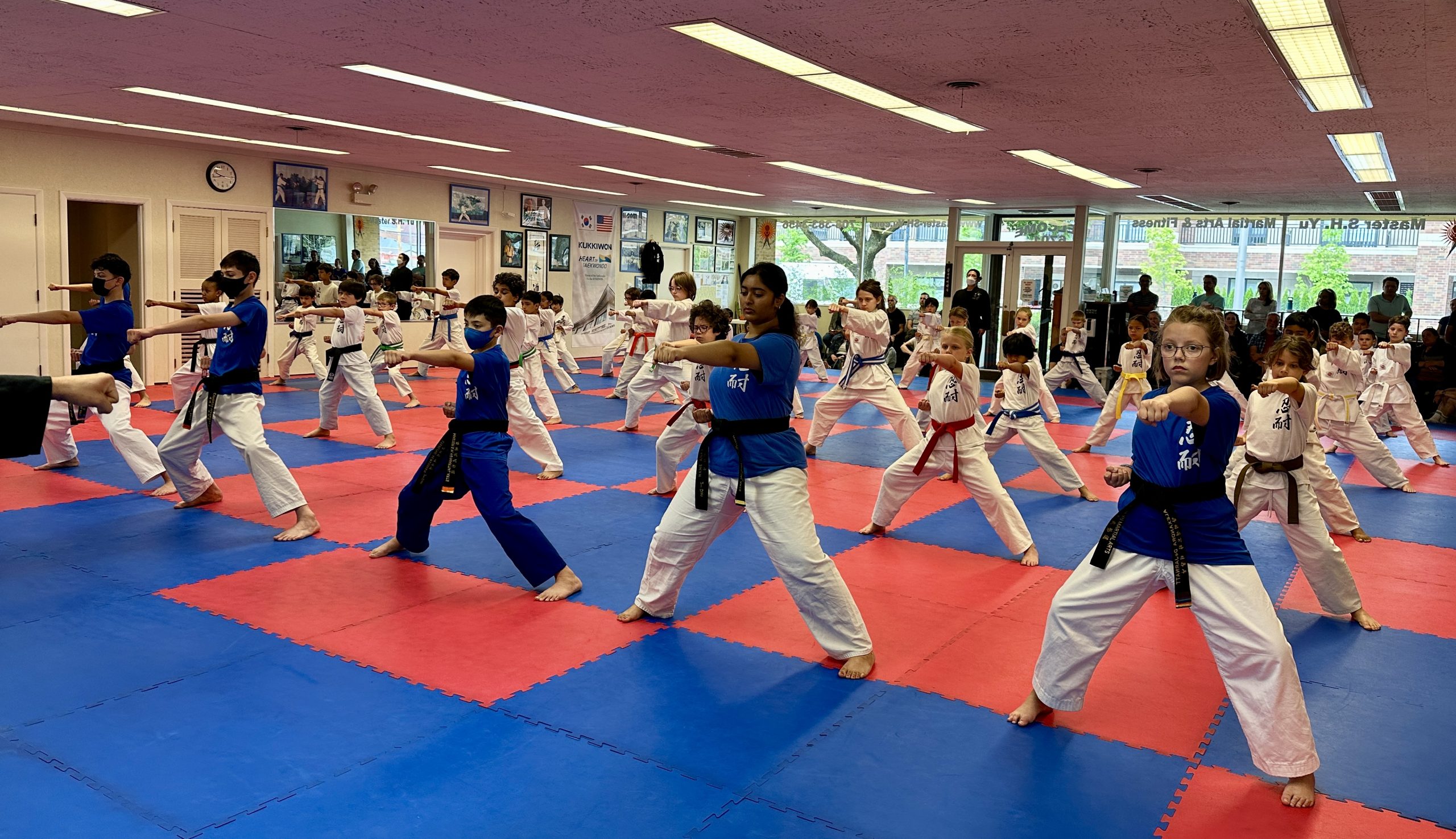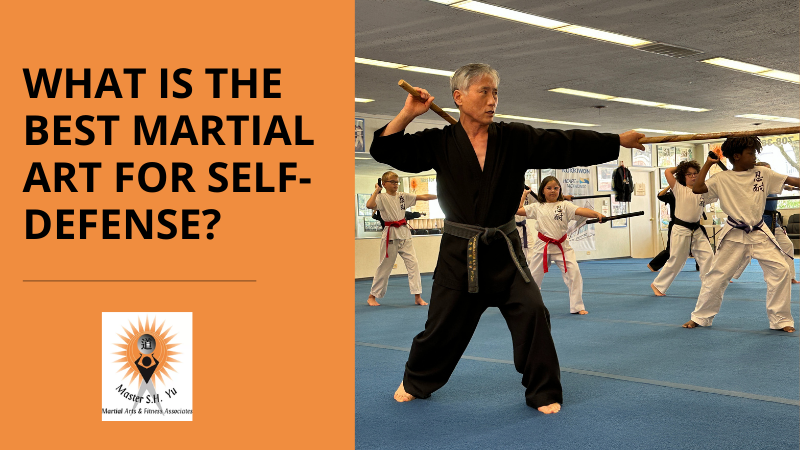
What is the Best Martial Art for Self-Defense?
If you’ve ever wondered what is the best martial art for self-defense, you’re not alone. With so many disciplines out there, from striking arts like TaeKwonDo and Muay Thai to grappling styles like Judo and Brazilian Jiu-Jitsu, it can be overwhelming to know which one truly prepares you for real-world situations. When it comes to personal safety, learning how to defend yourself can make all the difference. Pursuing a martial arts discipline not only gives you the skills needed to protect yourself, but also builds confidence, discipline, and mental resilience that carry over into all areas of life.
In this blog, we’ll break down the strengths and practical applications of popular martial arts, helping you understand which disciplines are best suited to protect yourself in everyday situations. Whether you’re looking for confidence, skill, or a combination of both, finding the right martial art can empower you to stay safe and prepared.
How to Choose the Best Martial Art for Self-Defense
Not all martial arts are created equal when it comes to practical self-defense. While some focus on skill, performance, or tradition, the most effective self-defense systems prioritize techniques that work in real-world situations. Here are a few key factors that make a martial art suitable for protecting yourself:
- Practicality: A good self-defense martial art emphasizes moves that can be applied under stress, against opponents of varying sizes, and in unpredictable situations. Techniques should be simple, direct, and easy to recall when it matters most.
- Situational Awareness: Effective self-defense isn’t just about physical skills; it’s also about recognizing danger before it escalates. Martial arts that teach awareness, de-escalation tactics, and how to read body language give practitioners an added advantage.
- Realistic Training: Training with resistance, sparring, and scenario-based exercises helps you prepare for real-life encounters. Martial arts that focus solely on choreographed movements may look impressive, but don’t always translate to practical defense.
- Versatility: Self-defense situations can be unpredictable, so the best martial arts teach techniques for standing, grappling, striking, and defending against weapons or multiple attackers. A well-rounded approach increases your chances of staying safe.
By considering these factors, you can choose a martial art that not only enhances your physical abilities but also equips you with the mindset and confidence to handle real-world threats effectively.
| Martial Art | Main Focus | Best For |
|---|---|---|
| Judo | Throws, leverage | Close-quarters defense |
| Brazilian Jiu-Jitsu (BJJ) | Ground defense | Escaping holds, ground control |
| Krav Maga | Real-world defense | Street self-defense, multiple attackers |
| Boxing / Muay Thai | Striking | Stand-up defense |
| Tae Kwon Do | Kicks, agility | Distance defense, fitness |
| Aikido | Redirection, control | Non-violent defense |
| Hapkido | Mixed strikes & locks | Balanced approach |
| Kumdo (Gumdo) | Swordsmanship | Focus, awareness |
Judo for Self-Defense: Grappling and Control
Judo is a martial art that focuses on using an opponent’s strength and balance against them, making it an excellent choice for self-defense, especially in close-quarters situations. Unlike striking-based arts, Judo emphasizes throws, joint locks, and pins, allowing you to neutralize threats without relying on brute strength.
One of Judo’s biggest advantages in self-defense is its focus on leverage and technique over power. This means that even smaller or weaker individuals can effectively control larger attackers by redirecting force and maintaining balance. Techniques like hip throws, sweeps, and takedowns can quickly put an aggressor on the ground, allowing you to escape or gain control.
In addition to physical skills, Judo teaches timing, body positioning, and situational awareness, critical components of real-world self-defense. Regular training also builds confidence and composure under pressure, helping you remain calm when confronted with an unexpected threat.
Whether used in combination with striking or as a standalone discipline, Judo equips practitioners with practical tools for defending themselves while minimizing the risk of injury to both themselves and their attacker.
- Focus: Judo focuses on throws, leverage, and joint locks.
- Pros: Throws and joint locks are effective against larger opponents.
- Cons: There is no striking in Judo, which makes it ineffective against multiple attackers.
- Best for: Close-quarters, one-on-one combat and takedown defense.
- Real-life example: Judo can be used to stop and throw an attacker who tries to grab you.
Aikido and Hapkido: Redirection and Joint Manipulation
Aikido and Hapkido are martial arts that emphasize control through redirection and joint manipulation rather than brute force. Both styles focus on using an attacker’s momentum against them, making them effective options for individuals who want to defend themselves without relying heavily on striking power.
Aikido is rooted in the philosophy of harmony and non-aggression. Practitioners learn to blend with an opponent’s movements, redirect energy, and apply joint locks or throws to neutralize the threat. While Aikido is less about causing damage and more about safe control, it can be highly effective in de-escalating situations and subduing attackers without excessive force.
Hapkido, on the other hand, takes a more versatile approach. It combines joint locks and throws with strikes, kicks, and pressure point techniques. This makes Hapkido more adaptable to real-world self-defense scenarios, offering both defensive and offensive options depending on the situation.
Both arts train practitioners to stay calm under pressure, develop precise timing, and control opponents with technique rather than strength. For those who want a self-defense style that prioritizes control and redirection while offering practical applications, Aikido and Hapkido provide unique and effective methods of protection.
- Aikido: Focuses on energy redirection and applying joint locks and throws for non-aggressive defense.
- Hapkido: Includes strikes, kicks, and pressure point control as well as joint locks and throws.
- Pros: Both disciplines offer a non-violent approach and are effective against grabs.
- Cons: The techniques for both disciplines are difficult to apply under stress without a high skill level.
- Best for: Those looking to study a traditional discipline and learn self-defense that causes minimal harm.
Tae Kwon Do: Speed Striking and Kicking Power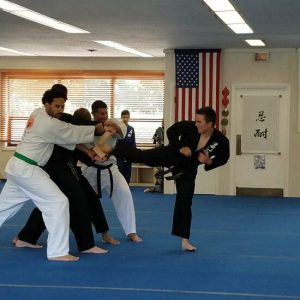
Tae kwon do is one of the most widely practiced martial arts in the world, known for its explosive kicks, lightning-fast strikes, and dynamic footwork. Originating in Korea, this discipline emphasizes speed and precision, making it a powerful tool for self-defense when distance and striking are key.
One of Tae Kwon Do’s greatest strengths is its focus on powerful kicking techniques. High, spinning, and side kicks can deliver significant force, creating space between you and an aggressor or stopping an attack outright. Combined with quick hand strikes and agile movement, Taekwondo teaches practitioners how to overwhelm an opponent with speed and precision.
In a self-defense context, Tae Kwon Do is especially effective for building reflexes, improving coordination, and learning how to strike decisively. Its emphasis on distance management and counterattacks can help you avoid being grabbed or pulled into a vulnerable position.
However, because it focuses heavily on kicking, Tae Kwon Do can be less practical in very close-range scenarios or when grappling. For this reason, many practitioners combine Tae Kwon Do with other martial arts to create a more well-rounded self-defense strategy.
- Focus: Tae Kwon Do focuses on high kicks, fast footwork, and point sparring.
- Pros: Practicing Tae Kwon Do builds speed, agility, and reaction time.
- Cons: Limited ground defense because of the heavy focus on kicking.
- Best for: Striking-focused self-defense, flexibility, agility, fitness, and building confidence.
Can Tae Kwon Do be Effective for Real-Life Self-Defense?
Tae Kwon Do can be effective for real-life self-defense, but with some important caveats.
On the positive side, Tae Kwon Do practitioners develop fast reflexes, powerful kicks, strong strikes, and excellent footwork, all of which can help create distance and quickly stop an aggressor. Its emphasis on speed and explosive movement can give you the ability to strike hard and escape before a situation escalates. Training also builds confidence, awareness, and discipline, key elements of staying safe.
However, Tae Kwon Do has limitations in real-world scenarios. Because it focuses heavily on long-range kicks, it may be less effective in close-quarters situations where an attacker grabs or tackles you. Traditional Tae Kwon Do schools may also emphasize point sparring or competition rules, which don’t always translate directly to street defense.
For the best results, many people who practice Tae Kwon Do for self-defense supplement it with grappling arts (like Judo or Brazilian Jiu-Jitsu) or practical self-defense systems (like Krav Maga) to cover a wider range of situations.
Kumdo/Gumdo: Korean Swordsmanship for Awareness and Precision
Kumdo, also known as Gumdo, is a Korean martial art rooted in traditional swordsmanship. While it may not seem like the most practical choice for modern-day self-defense since carrying a sword isn’t exactly common, it offers unique benefits that go beyond weapon training. Practitioners develop exceptional awareness, timing, focus, and precision, all of which are valuable skills in real-world defensive situations.
The core of Kumdo lies in learning controlled movements with a sword, often practiced through forms, sparring, and drills. These exercises sharpen reflexes, improve posture, and teach practitioners how to stay calm under pressure. Even though most training involves wooden or bamboo swords, the discipline required to master these techniques translates into better mental clarity and sharper decision-making in everyday life.
From a self-defense perspective, Kumdo is less about direct application and more about building the mindset of a warrior, awareness of surroundings, precision in movement, and confidence under stress. These qualities can enhance your effectiveness if you also train in other martial arts focused on unarmed defense. While Kumdo itself may not be the most practical standalone martial art for modern self-defense, it provides valuable mental and physical skills that complement other forms of training, making you more composed, focused, and ready to respond in any situation.
- Focus: Kumdo focuses on swordsmanship as well as mental training and discipline.
- Pros: Practicing Kumdo sharpens reflexes, awareness, posture, and control.
- Cons: Not applicable without a weapon.
- Best for: Those interested in traditional weapons training and focus.
Best Martial Art for Self-Defense Based on Your Goals
The best martial art for self-defense isn’t the same for everyone; it depends on your goals, fitness level, and personal preferences. Each discipline has its strengths, so choosing the right one starts with understanding what you’re looking for.
| Factor | Considerations |
|---|---|
| Defensive Only vs. Mixed Techniques | If your goal is purely defensive, arts like Aikido or Judo emphasize control, redirection, and neutralizing threats without heavy striking. If you want a balance of striking and grappling, Hapkido, Brazilian Jiu-Jitsu, or Krav Maga offer a more well-rounded toolkit. |
| Age and Fitness Level | Some martial arts, like Tae Kwon Do, rely heavily on speed, flexibility, and explosive movements, which may be better suited to younger or highly active practitioners. Others, like Judo or BJJ, rely more on leverage and technique, making them accessible across different ages and body types. |
| Tradition vs. Sport | If you value discipline, philosophy, and cultural tradition, arts like Karate, Aikido, or Kumdo provide a strong sense of heritage alongside training. If you’re drawn to competition and athletic performance, arts like Tae Kwon Do, Muay Thai, or Jiu-Jitsu might be a better fit. |
Ultimately, the best way to decide is to try more than one martial art. Many schools offer trial classes, and experiencing different styles firsthand can help you find the right balance of practicality, enjoyment, and personal growth. The best martial art for self-defense is the one you’ll commit to practicing consistently.
Final Verdict: No One-Size-Fits-All
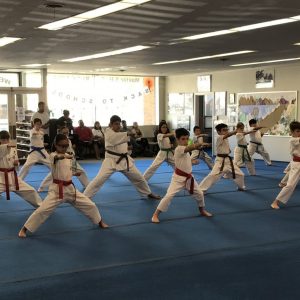
When it comes to choosing the best martial art for self-defense, there’s no single answer that works for everyone. Each discipline offers its own unique strengths. Judo excels in throws and control, Tae Kwon Do delivers speed and striking power, Aikido and Hapkido emphasize redirection and joint manipulation, while arts like Krav Maga focus directly on real-world scenarios. What works best for you depends on your goals, body type, and training preferences.
For real-world self-defense, a hybrid approach or cross-training is often the most effective. Combining striking with grappling or pairing a traditional martial art with a practical system like Krav Maga can give you a more complete set of tools to handle unpredictable situations.
The best way to decide is to try out classes and talk with instructors. Every school has its own teaching style and philosophy, and the right environment can make a huge difference in your progress and confidence. Look for a place where you feel safe, motivated, and supported in your goals.
Frequently Asked Questions (FAQs)
What martial art is most effective in a street fight?
Street fights are unpredictable, so no martial art guarantees success in every situation. But some are more practical for real-world encounters than others. Generally, the most effective martial arts for street fights are those that emphasize simplicity, adaptability, and real-world application rather than competition rules or flashy techniques.
Here are a few widely considered effective:
- Krav Maga: Developed for the Israeli military, it focuses on survival, quick counterattacks, and neutralizing threats (including multiple attackers or weapons).
- Brazilian Jiu-Jitsu (BJJ): Highly effective if a fight goes to the ground, teaching control, escapes, and submissions against larger opponents.
- Muay Thai / Boxing: Excellent for striking, with powerful punches, elbows, and kicks that work well in close-range encounters.
- Judo / Wrestling: Great for takedowns and controlling an opponent if you’re grabbed or rushed.
The best “street fight” martial art is a mix of skills, including striking, grappling, and situational awareness. That’s why many experts recommend cross-training (for example, boxing + BJJ, or Krav Maga with Judo). The goal in a street fight isn’t to “win” but to escape safely. Awareness, de-escalation, and the ability to get away often matter more than fighting ability.
Is Tae Kwon Do useful for adults learning self-defense?
Yes, Tae Kwon Do can be useful for adults learning self-defense, but with some realistic expectations.
Strengths for adults:
- Builds speed, balance, and flexibility, which are useful for striking and escaping.
- Emphasizes powerful kicks and fast counters, which can stop an aggressor or create distance.
- Improves confidence, awareness, and fitness, all of which help in staying safe.
- Many schools also teach basic self-defense drills, like how to break free from grabs.
Limitations to keep in mind:
- Traditional Tae Kwon Do often focuses on sparring and point-scoring, which may not directly translate to real-life self-defense.
- Heavy reliance on long-range kicking makes it less effective in close-quarters situations, like grabs, holds, or ground fights.
- Effectiveness can vary greatly depending on the instructor’s philosophy; some schools emphasize self-defense applications more than others.
For adults looking at self-defense specifically, Tae Kwon Do can definitely be a good starting point, especially for striking and confidence-building. But it’s most effective when paired with training in grappling (like Judo or Brazilian Jiu-Jitsu) or a practical system like Krav Maga to cover a wider range of situations.
How long does it take to learn Hapkido for self-defense?
Learning Hapkido for self-defense depends on your goals, how often you train, and the quality of instruction. Unlike sport-focused martial arts, Hapkido is designed as a practical self-defense system that teaches strikes, joint locks, throws, and pressure point techniques so you can start applying basics fairly early.
Here’s a general timeline:
- 3–6 months: You’ll pick up basic strikes, kicks, wrist grabs, and simple joint locks. At this stage, you may have enough skill to handle very basic self-defense situations.
- 1–2 years: With consistent training (2–3 times per week), you’ll develop real competence in controlling opponents, defending against grabs, and applying throws. You’ll also build awareness, reflexes, and confidence.
- 3–5 years: You’ll reach a higher level of proficiency, with strong technique, fluid movement, and the ability to adapt to different attackers and scenarios. At this stage, your skills are practical and reliable in real-world situations.
You don’t need to be a black belt to use Hapkido for self-defense. Many people gain functional skills within the first year, but real confidence and adaptability come with consistent training over several years.
What is the difference between Kumdo and Kendo?
Kumdo and Kendo are very closely related, but there are some cultural and technical differences.
Kendo (剣道) is the Japanese martial art of fencing with bamboo swords (shinai) while wearing protective armor (bogu). It emphasizes discipline, respect, and the development of character through rigorous training. Kendo practitioners focus on precision strikes, footwork, and timing, with a strong influence from Japanese samurai traditions.
Kumdo (검도) is essentially the Korean adaptation of Kendo. Introduced during the Japanese occupation of Korea in the early 20th century, it evolved into its own practice while still sharing nearly all of Kendo’s techniques and structure. The word “Kumdo” literally means “the way of the sword” in Korean, just like “Kendo” in Japanese.
Key differences:
- Cultural influence: Kendo is taught with Japanese terminology, philosophy, and etiquette, while Kumdo uses the Korean language and cultural framing.
- Training approach: Some Kumdo schools incorporate additional techniques or drills outside the standard Kendo curriculum, sometimes blending in elements of traditional Korean sword arts.
- Competition: Both use very similar sparring and scoring systems, but Kumdo tournaments are primarily centered in Korea, whereas Kendo has a broader global presence.
Try a Martial Arts Class Near You
Martial arts training is about more than learning techniques; it’s about developing confidence, focus, and resilience that carry into every part of life. Supreme GrandMaster Yu has created a curriculum that reflects his diverse training in a variety of martial arts, while still staying true to each art’s origin. Students benefit from this variety of skills and applications. If you’re ready to take the first step toward building real-world self-defense skills while improving your overall fitness and mindset, Master S.H. Yu Martial Arts is here to guide you.
With expert instruction, a supportive school environment, and a curriculum rooted in both tradition and practical application, you’ll find the martial arts training that best matches your goals. Contact Master S.H. Yu Martial Arts today to explore our martial arts programs for adults, try a class, and begin your journey toward greater strength, awareness, and personal safety.
